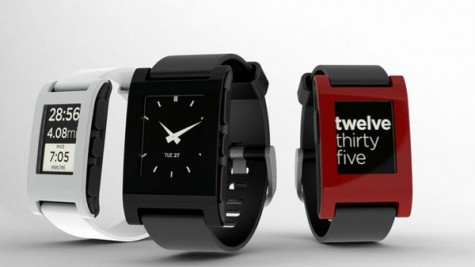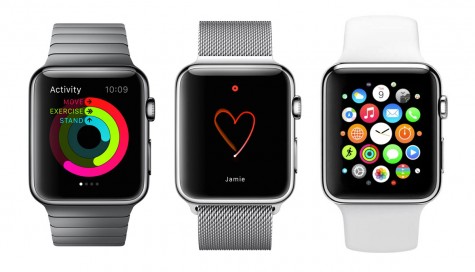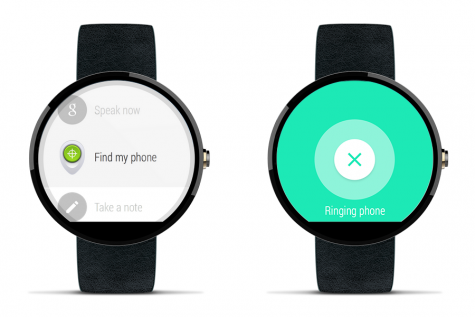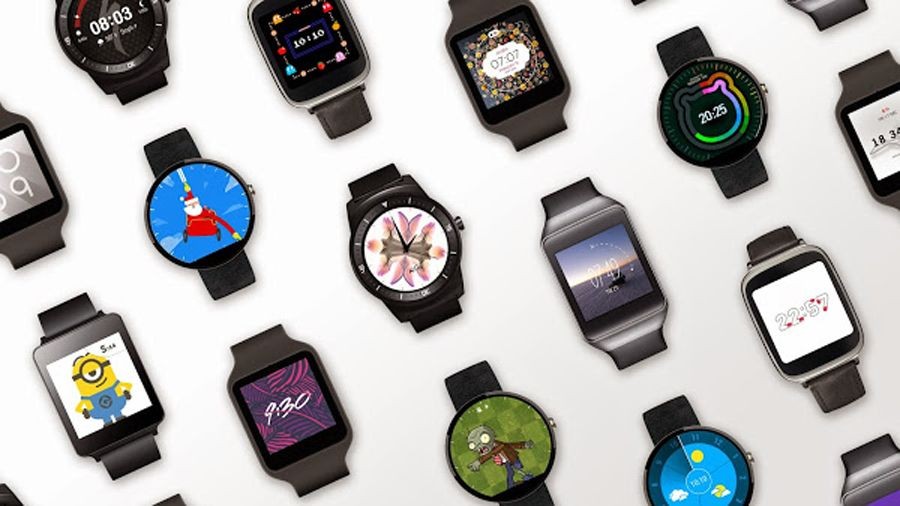Coming Soon to a Wrist Near You
In the last decade, the smartphone has changed the way we interact with our world. Many companies are searching for the next breakthrough in technology. Major companies like Google, Apple and Samsung have invested heavily in what they believe is the next big thing: wearable technology. With smartwatches, tech companies aim to further assist you in your daily life, providing convenient access to applications from your phone, improving the experience of receiving and acting upon notifications and aiding in your personal fitness. The question is: which one is the best?
- Pebble was one of the first entries into the smartwatch category. Considered by many to be the first modern smartwatch, it focuses on features most other watches gloss over. Unlike most smartwatches, which turn their LED displays on and off throughout the day, the Pebble Time uses an e-ink display similar to that of the Kindle or Nook. The display eats up far less power, allowing the watch to stay on all the time, like a traditional watch. Pebble Time excels at battery life— while most watches last a day or less on a single charge, the Pebble can stay on for up to a week. The watch is also waterproof, so it can be worn while washing hands, showering or even swimming. To achieve these great features, Pebble had to compromise in other areas. For example, the always-on e-ink screen has muted colors and a low resolution, so it isn’t that pretty to look at. Unlike other watches described in this article, the Pebble Time lacks a heart rate monitor making it less suitable for fitness. Since Pebble doesn’t make their own phones, they have to use a third-party app on other platforms to manage interaction between the watch and a smartphone. This limits what can be done with the Pebble Time. For instance, when you receive a text, only Android phones allow you to respond directly from the watch. However, its open developer software allows nearly anyone with coding skills to create free custom watch faces and apps. The Pebble is also inexpensive, coming in at just $150 dollars.

- The Apple Watch may be the most anticipated smartwatch to date. Rumors circled about its appearance and functionality as far back as three years ago. The Watch has lived up to the hype in many ways, and in other ways, not so much. The Watch is definitely not as easy to use as Apple’s other products. It has a steep learning curve, and all of its menus, apps, buttons and knobs take some getting used to. Once you have learned your way around the Watch, it becomes an essential tool. Since Apple designs the hardware and software of all their products, they give the Apple Watch special access to many features of the iPhone. Messaging, calling, maps and mobile payment all transfer seamlessly from the phone to the Watch. Apple has also put great effort into making the Watch a great fitness tool. It tracks daily activity and workouts and gives reminders to motivate you to exercise more. The main place where the Watch fails is in simplicity. Unlike other watches, especially those running Google’s Android Wear, the Apple Watch is less automatic and requires direct interaction to complete different tasks. While more control over the Watch may be a nice feature for some, it certainly makes the Watch feel sluggish at times. Style is one area that Apple has definitely mastered. Apple has always been centered on design, and the Watch is no exception. Although it is a stainless steel rectangle, Apple has managed to make it surprisingly beautiful, with a wide selection of bands and finishes to choose from. The Apple Watch is also the most expensive smartwatch out right now. The lightweight aluminum sport starts at $350, the classy steel Watch at $550, and the fancy gold edition at a whopping $10,000. The Watch is exclusive to iPhone, which means that anyone running Android will have to look elsewhere.

- Google ventured into the world of wearables with Android Wear. Wear is not a singular watch, but an open-source platform for companies like Motorola, Samsung and LG to use in their smartwatches. Android Wear is the opposite of the Apple Watch; it is extremely easy to understand. But the fact that it runs on so many devices makes it hard to incorporate any in-depth features. The main screen of Wear shows recent notification “cards” in a list. Swiping on these cards reveals actions specific to that notification. For example, a card with a message from a friend will allow you to respond to the message quickly. Google has also incorporated some fitness software with Google Fit, but it lacks the dedicated Activity and Workout apps of the Apple Watch. In general, Android Wear is limited by its scale. If Google developed their own watch, they could control the product and its features. For now, however, it’s up to hardware manufacturers to utilize Wear as much as possible. Wear watches work with Android and iOS and cost anywhere from $150 to $400.

Ultimately, all of these watches have their own merits. If you are looking for an inexpensive option and like an always-on display and a long battery life, the Pebble Time is the best choice. If you have money to spend and enjoy a nice-looking watch that can seamlessly interact with your iPhone, buy an Apple Watch. And if you want something simple and easy to understand that won’t break the bank, Android Wear may be right for you.



